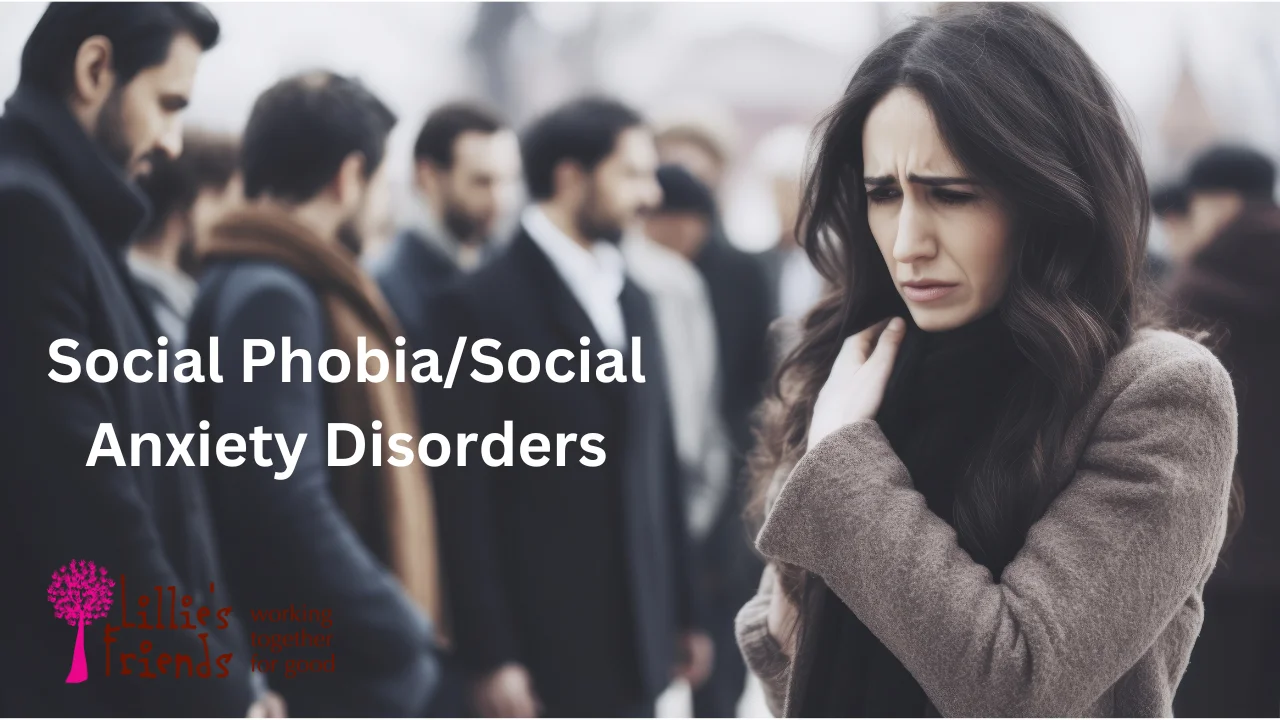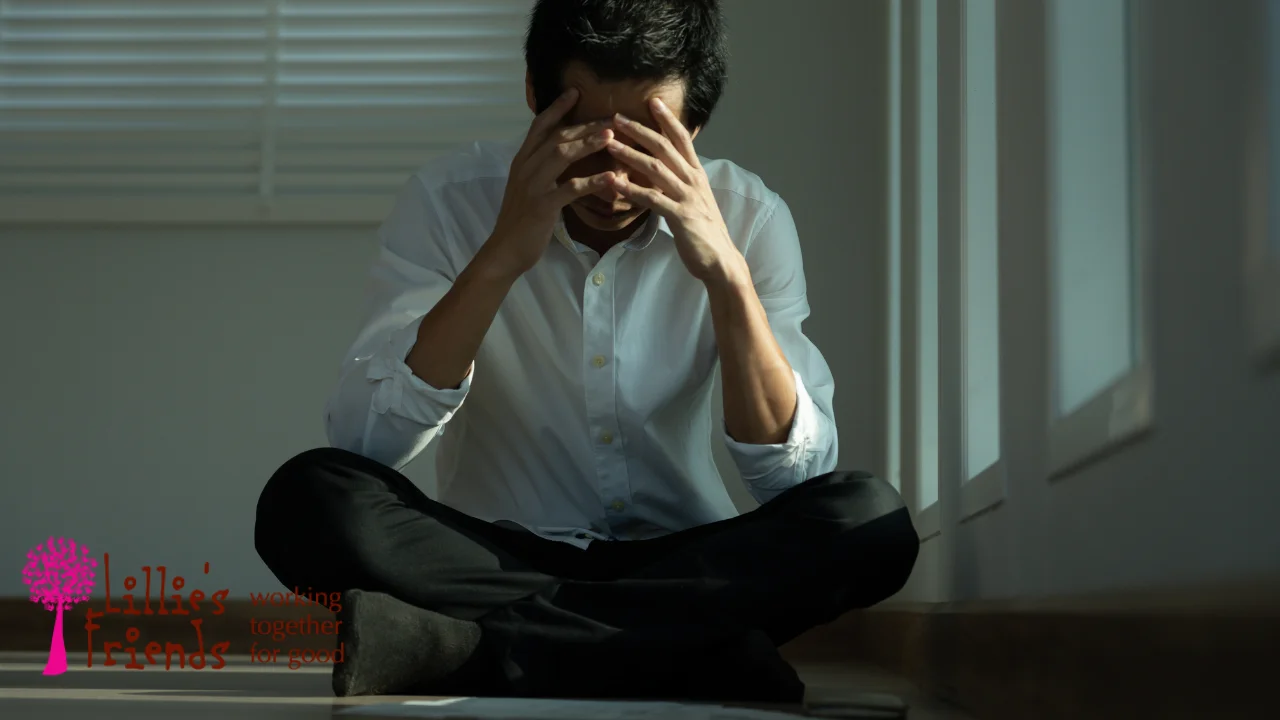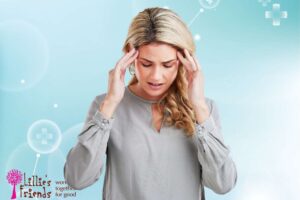Humans evolved to feel anxiety to prepare for dangers and protect themselves. Although some nervousness is typical in stressful settings, anxiety disorders [1*] worsen these sensations. These problems impair everyday life and well-being beyond typical worries. This article discusses anxiety disorders and associated symptoms.
Diagnostics and Symptoms of Different Anxiety Types
Anxiety disorders cause intense anxiety, concern, or dread that impairs daily life. But each illness has its own symptoms. Common DSM-5 anxiety disorders are listed below.
Generalized Anxiety Disorder
GAD is characterized by excessive life anxiety. These concerns may include employment, health, family, or daily life. GAD causes difficult-to-manage anxiety and symptoms like
- Restlessness.
- Fatigue.
- Tense muscles.
- Inability to focus.
Panic Disorder
Unexpected and frequent panic episodes describe panic disorder. They entail abrupt fear or pain. Symptoms include:
- Heart palpitations.
- Sweating.
- Trembling.
- Shortness of breath.
- Chest discomfort.
- Dizziness.
- Losing control.
- Anxiety over panic episodes (changing behavior)

Social Phobia/Social Anxiety Disorder
The hallmark of social anxiety disorder is a profound dread of social settings. Another fear that someone might have is of being scrutinized or receiving a bad evaluation. Individuals who have social anxiety may worry about:
- public areas.
- Speaking in front of others.
- interviews for jobs.
- eating in front of others.
- interacting with people in public places.
Avoidance behavior may result from these anxieties. A person may also become nervous that other people may see their bodily signs of nervousness [2*], such flushing or sweating.
Particular Fear
An intense and unfounded dread of anything in particular, such as heights, spiders, flying, or medical procedures, is known as a specific phobia. It is upsetting when avoidance behavior results from extreme dread. When in the scenario or around the trigger item, an individual might feel
- a feeling of peril or imminent tragedy.
- They want to flee.
- palpitations in the heart.
- perspiration.
- Trembling.
- a feeling of gasping for oxygen or being suffocated.
Disorder of Illness Anxiety
Another name for illness anxiety disorder [3*] is hypochondria or hypochondriasis. This disorder is characterized by a person’s dread of becoming unwell or having a serious medical condition. They might misinterpret regular body functions for signs of illness. Typical signs of anxiety in disease include:
- a great deal of fear about health.
- avoiding people or places in case one becomes ill.
- searching for illnesses and symptoms all the time.
- obsession with bodily functions, such as heart rate.
- exaggerated symptoms and indicators, such as when a cough appears to be an indication of lung cancer.
Agoraphobia
Agoraphobia is the fear and avoidance of difficult exits. In the event of panic-like or other embarrassing or crippling symptoms, a person may avoid places where help is unavailable. A patient may fear public transportation or crowds. One may fear being alone outside her home.
Disorder of Separation Anxiety
Being apart from important people causes worry in anybody who suffers from separation anxiety disorder. In youngsters, the emotion lasts for a minimum of four weeks, whereas in adults, it lasts for six months. The person’s dread of being alone is excessive for their age and gets in the way of their everyday life. A person suffering from separation anxiety disorder may have nightmares about being apart from their loved one, be scared of losing them, or refuse to leave the home or spend the night without them.
Particular Mutism
Selective mutism often manifests before the age of five; however, it could go undiagnosed until the kid enters school. Children with this disorder speak effectively in familiar contexts but poorly in formal social settings like school. Speaking less may have negative effects, such as
- problems in academia.
- utter shyness
- searching for illnesses and symptoms all the time.
- Fear of humiliation in front of others
- severe social anxiety
Selective mutism is a disease that many children outgrow, and it may also disappear in those who also have concomitant social anxiety disorder. However, symptoms might sometimes last until maturity.
Additional Mental Health Issues Associated with Stress and Anxiety
Anxiety has many characteristics in common with a number of different disorders, including post-traumatic stress disorder (PTSD) and obsessive-compulsive disorder (OCD). Even though every condition is unique, there may be commonalities in the underlying causes, experiences, and symptoms.
OCD, or obsessive-compulsive disorder
Chronic OCD is a mental condition characterized by recurrent, upsetting thoughts called obsessions and repeated behaviors called compulsions that are brought on by the obsessions. These feelings and behaviors may be upsetting, time-consuming, and significantly interfere with day-to-day activities. One example of an obsession or compulsion would be someone who cleans everything repeatedly out of fear of germs or illnesses. An additional example would be a need for order and symmetry.
PTSD, or post-traumatic stress disorder
After going through or witnessing a terrible incident, a person may subsequently have post-traumatic stress disorder. It may impact individuals at all ages and is often associated with encounters with violence, war, accidents, natural disasters, or any other event that puts one’s life in danger.
Signs:
- disturbing recollections.
- Steer clear.
- negative shifts in attitude and thinking.
- elevated arousal.
- numbness of emotion.
Excoriation Disorder, or skin-picking
Excoriation condition, often known as skin-picking disorder [4*] , is characterized by compulsive skin picking that damages skin tissue. It is often diagnosed as body-focused repetitive behavior disorder (BFRB). Among the symptoms are
- excessive picking at skin.
- struggles to stop this tendency despite attempts to do so.
- suffering on an emotional level.
Pulling hair out (Trichotillomania)
The intense need to pull out hair, which causes mental discomfort and hair loss, is the hallmark of trichotillomania. Skin-picking and other body-focused repetitive behaviors (BFRB) are characteristics of this disorder. One of the symptoms is the obsessive pulling of hair in reaction to stress or worry.
In summary
Anxiety is a broad category of complicated mental health issues that may have a significant influence on day-to-day functioning. Each kind of anxiety condition has different difficulties and needs different care. It’s important to realize that anxiety disorders are not just a symptom of weakness but also actual medical conditions.
FAQ
What are the 3 common symptoms of anxiety attacks?
Various physical and psychological signs are indicative of anxiety attacks. The most typical ones consist of
- a profound sense of impending disaster or dread.
- palpitations or a faster pulse rate.
- a feeling of being unable to breathe or choking.
What are the different forms of anxiety attacks?
Both predicted and unexpected anxiety episodes are possible. Anticipated anxiety or panic episodes indicate that the sufferer is aware of the triggers, which may include specific circumstances or items. Conversely, unexpected panic episodes seem to have no apparent cause, yet there probably is one; however, it could be difficult to pinpoint.
What is the rarest type of anxiety?
A sizable percentage of people suffer from anxiety problems. The two of them are regarded as quite uncommon, nevertheless. Hypochondria, or illness anxiety disorder, affects a mere 0.1% of the US population. Additionally, 1-2% [5*] of people have selective mutism.
Are there 4 levels of anxiety?
There isn’t a set structure for classifying anxiety into phases. On the other hand, anxiety may be classified as mild, moderate, severe, or panic-level anxiety based on how it affects daily functioning.
What is the most common anxiety type?
In this class, generalized anxiety disorder (GAD) is the most common kind. It is characterized by excessive and ongoing concern about many aspects of life, including jobs, health, family, and day-to-day affairs.
What is the disorder category of anxiety?
The Diagnostic and Statistical Manual of Mental Disorders, Fifth Edition, classifies anxiety as a mental health condition and labels it as an “anxiety disorder.”
Is anxiety a mental illness or disorder?
In addition to being a mental disease, anxiety is a condition. It includes a broader spectrum of disorders that influence a person’s thoughts, emotions, and actions, therefore impairing functioning and causing suffering.











